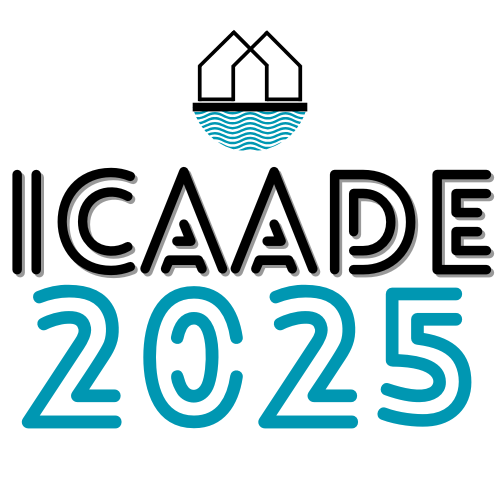We are pleased to announce that the Icaade 2023 took place in Cottbus, Germany. Many interesting guests from all over the world contributed to the success of the event. We say thank you to all of you
ICAADE 2023
CONFERENCE
Keynote Speakers Program Conference Brochure Registration Fieldtrip Impressions
For Authors
Important Dates Topics Call for Abstracts
LOCAL INFORMATION
Sponsors
COMMITTEES
Executive Committee Local Organizing Committee Scientific Review Committee
CONTACT US
PREVIOUS CONFERENCES
The fourth International Conference on Amphibious and Floating Architecture, Design and Engineering will be held at the Institute for Floating Buildings (IfSB e.V.) and Brandenburg University of Technology (BTU) in Cottbus, Germany, from October 9 to 11, 2023. More Information will be available shortly.
SUBMIT ABSTRACTS BEFORE 03 JULY 2023!
You are welcome to contact us by mail: frank.hoefler@b-tu.de
ICAADE 2023 - SettliNG SAFELY on and beside water
We will bring together practitioners, researchers, authorities, students, NGO’s, communities and investors in the exchange of knowledge and practice on amphibious and floating issues. Architecture, design and engineering are the result of long-lasting social, economic and technological progress and pathways. We need multidisciplinary perspectives on shifting the boundaries of water and land by use of architecture, design and engineering. These perspectives can support the identification of open questions, market potentials, acceptance and engagement, and flood risk mitigation and climate change adaptation.
We aim to overcome the land-water-dichotomy by providing space and time for discussions on the various paths of practice, experience and knowledge. A pier for science to policy, to practice, and vice versa will offer opportunities to include business, health, finance, design, insurance, politics, research and engineering. In the procedural amphibious space and for floating architecture, it is crucial to integrate natural, technological and human interactions for a more sustainable stewardship. With shifting perspectives, the ICAADE conference reflects on shifting boundaries and water-levels.
ICAADE 2023 - SettlING SAFELY on and beside water
Internationally recognized keynote speakers, architects and engineers
3-day progam with various panel sessions
Welcome reception, lunches, coffee breaks, conference dinner and field trip
What IS Amphibious and Floating Architecture?
Amphibious and floating architecture refers to an alternative flood mitigation strategy that allows an otherwise ordinary structure to float on the surface of rising floodwater rather than succumb to inundation.
An amphibious foundation retains the building’s connection to the ground by resting firmly on the earth under usual circumstances, yet it allows the building to float as high as necessary when flooding occurs. It is a flood mitigation strategy that works in synchrony with a flood prone region's natural cycles of flooding, rather than attempting to obstruct them. Amphibious construction may also refer to one of several hybrid conditions. One such is where the weight of a structure is partially supported by both land and water simultaneously. Another situation is where a mechanical system as jacks or hydraulic pumps are used to elevate the structure temporarily. "Wetproofing" is another hybrid strategy, whereby residents occupy the first floor during dry seasons and move to an upper floor during periods of flooding.
Floating architecture includes individual buildings and larger settlements on shores and lakes that are permanently floating on the water surface. Taking into account the resulting conditions related to the thermodynamic and mechanical properties of the existing water environment (use of alternative energies for cooling and heating, changeable location and position in relation to the water environment), there are many opportunities and risks to be considered for the future (influences from exposure to sunlight or neighborhood, and hazards related to water and ice attack, corrosion, and pollution). Another topic are questions about sustainable mobility, supply and disposal as well as about rescue services in case of accidents and fires.
Amphibious design and floating architecture also includes the concepts of land use planning, site selection, community resilience issues such as the place of buildings in multiple-lines-of-defense systems, and policy considerations. Amphibious and floating structures engineering addresses infrastructure, mechanical systems and utilities issues, system components and selection criteria, and codification and certification concerns.






